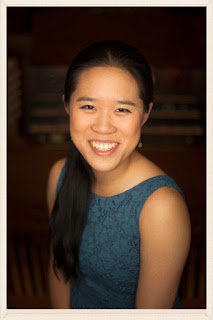Sunday will be the last day at the Phillips Collection to see 61 works hanging together for the first time in the U.S.
The art comes from the Kunstmuseum Basel in Switzerland and the private collections of Karl Im Obersteg (1883-1969) and Rudolf Staechelin (1881-1946) who acquired stunning impressionist, post-impressionist, and modern paintings (1870-1939) early on by artists of Russian, Swiss, French, German, and Dutch heritages.
Dorothy Kosinski, the director of the Phillips, is a Swiss citizen whose friendship with those in Switzerland was key to bringing the masterpieces to Washington.
Im Obersteg and Staechelin were contemporary collectors of Duncan Phillips (1886-1966), the founder of the Phillips, all of whom saw talent and treasure in the pieces of post-war and modern translations.
Paul Gauguin (1848-1903) NAFEA faaipoipo (When Will You Marry Me?), 1892, The Rudolph Staechelin Collection
Who but Picasso painted this nude below? An abstraction of a model fondles a pillow. It's one of four Picassos in the exhibition.
Pablo Picasso (1881-1973) Sleeping Nude, 1934, Im Obersteg Foundation, permanent loan to the Kunstmuseum Basel
Below is a self portrait done by the Russian expressionist, Alexej von Jawlensky who was influenced by the mysticism of the Eastern Orthodox Church and his belief that "art is a longing for God." During World War I he joined other avant-garde artists in Switzerland where he met Im Obersteg, and the two became lifelong friends.
Alexej von Jawlensky (1864-1941) Self-Portrait, 1911, Im Obersteg Foundation, permanent loan to the Kunstmuseum Basel
Alexej von Jawlensky (1864-1941) Still Life, 1915, Im Obersteg Foundation, permanent loan to the Kunstmuseum Basel
Ferdinand Hodler rendered more than 100 works devoted to his companion, Valentine Godel-Darel, as she coped with illness. He called her "a Byzantine Empress in the mosaics at Ravenna," and destroyed many he made of her because they did not "represent what I have seen."
Ferdinand Hodler (1853-1918) The Patient, November, 1914, The Rudolph Staechelin Collection
Marc Chagall's three 1914 "monumental" rabbi paintings are in the show, including the one below. The label copy notes his works show the influences of his Jewish Russian heritage and his training in Paris. (Who can deny their past?) The outbreak of World War I prolonged a trip Chagall made to his homeland (of what is now Belarus), giving him opportunities to meet rabbis and beggars invited into his family's home. Here Chagall combined them into one personality. A self-portrait he made, also in 1914, is pictured further below.
Marc Chagall (1887-1985) Jew in Black and White, 1914, Im Obersteg Foundation, permanent loan to the Kunstmuseum Basel
Vincent van Gogh (1853-90) The Garden of Daubigny July, 1890, The Rudolph Staechelin Collection
Paul Gauguin (1848-1903) Red Roof by the Water, 1885, The Rudolph Staechelin Collection
Ferdinand Hodler (1853-1918) Portrait of Regina Morgeron, 1911, Im Obersteg Foundation, permanent loan to the Kunstmuseum Basel
In the self-portrait below, the label copy says Marc Chagall combined Cubism and Orphism to paint himself (in 1914 at the outbreak of World War) as though looking in a mirror. Years later after the Nazis called his work "degenerate," the artist fled to New York in 1941 where he met a dealer who sold one of Chagall's works to Duncan Phillips, the host of one of the first Chagall shows in the U.S.
Marc Chagall (1887-1985) Self-Portrait, 1914, Im Obersteg Foundation, permanent loan to the Kunstmuseum Basel
Also on the walls at the Phillips are works by Camille Pissarro, Cuno Amiet, Paul Cezanne, Andre Derain, Wassily Kandinsky, Edouard Manet, and Amedeo Modigliani.
And Claude Monet, Odilon Redon, Pierre-Auguste Renoir, Georges Rouault, Chaim Soutine, Maurice Utrillo, Suzanne Valadon (Utrillo's mother), and Maurice de Vlaminck.
For more enjoyment of the show, a catalogue and audio cellphone tour are available.
The paintings pictured above are the ones which had the most impact on me, whether it was subject, colors, perspectives, mood, emotions, or eye contact (!), but the names of the artists had no bearing on my choices. How do they strike you? Go and see, and please write soon.
What: Gauguin to Picasso: Masterworks from Switzerland - The Staechelin and Im Obersteg Collections
When: Now through January 10, 2016, 10 a.m. - 5 p.m., and Sunday, 12 - 7 p.m.
Where: The Phillips Collection, 1600 21st St., N.W. at Q St., Washington, D.C. 20009
Tickets: $12, $10 for students and those over 62, free for members and for children 18 and under.
Metro Station: Dupont Circle (Q Street exit. Turn left and walk one block.)
For more information: 202-387-2151
Patricialesli@gmail.com





